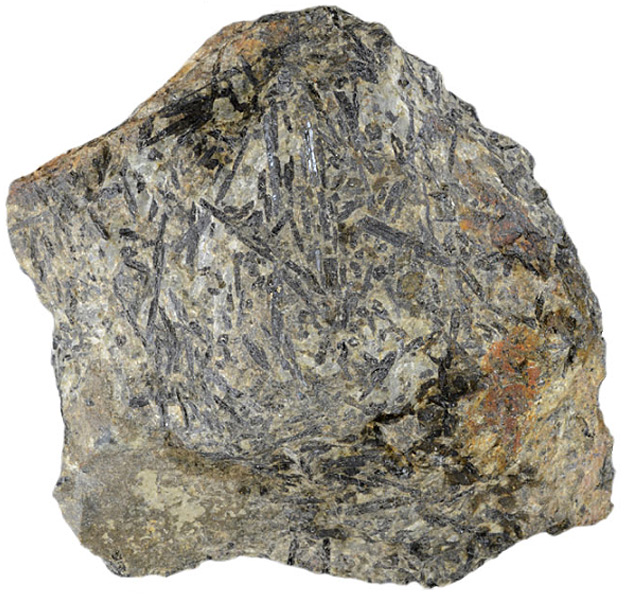
Fact sheet
This sample derives from the 49m thick Lugar sill in Ayreshire, Scotland, an alkaline sill intruded around 288 million years ago during the Carboniferous period. The sill was intruded as at least four separate phases (indicated by marginal chilling between the bands) ranging in composition from theralite passing down into kaersutite theralite and then picrite. It is thought that the magmas were produced in a deeper magma chamber by differentiation of a mantle-derived, alkali-rich picritic magma. The site is a protected Site of special Scientific Interest (SSSI).
The thin section contains large blades of brown pleochroic kaersutite amphibole, end sections of which exibit 120 degree amphibole cleavage. There are also many tabular plagioclase grains showing some alteration. Pale coloured nepheline and analcime are also present and exhibit low birefringence colours. Altered pyroxene was probably originally titan augite.
The United Kingdom Virtual Microscope (UKVM) collection consists of igneous, sedimentary and metamorphic rocks from around the UK.
It is intended as a teaching resource, helping to tell the story of the common rock types and how they form, and reflecting the history of the UK at the margins of the continent of Europe. The collection is a series of teaching sets, for example igneous rocks from the North Atlantic Igneous Province and SW England; high-temperature metamorphic rocks from Scotland and low-temperature metamorphic rocks from Wales; and sedimentary rocks, including English limestones and sandstones.






